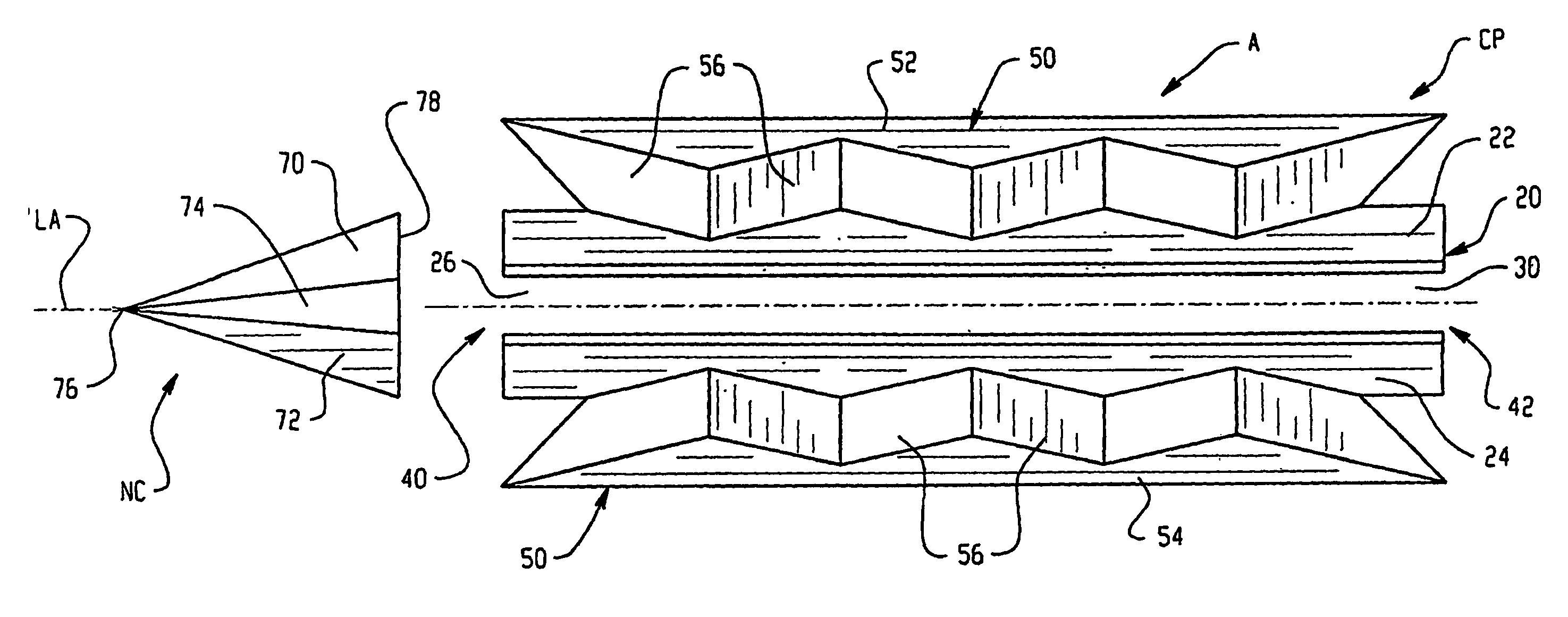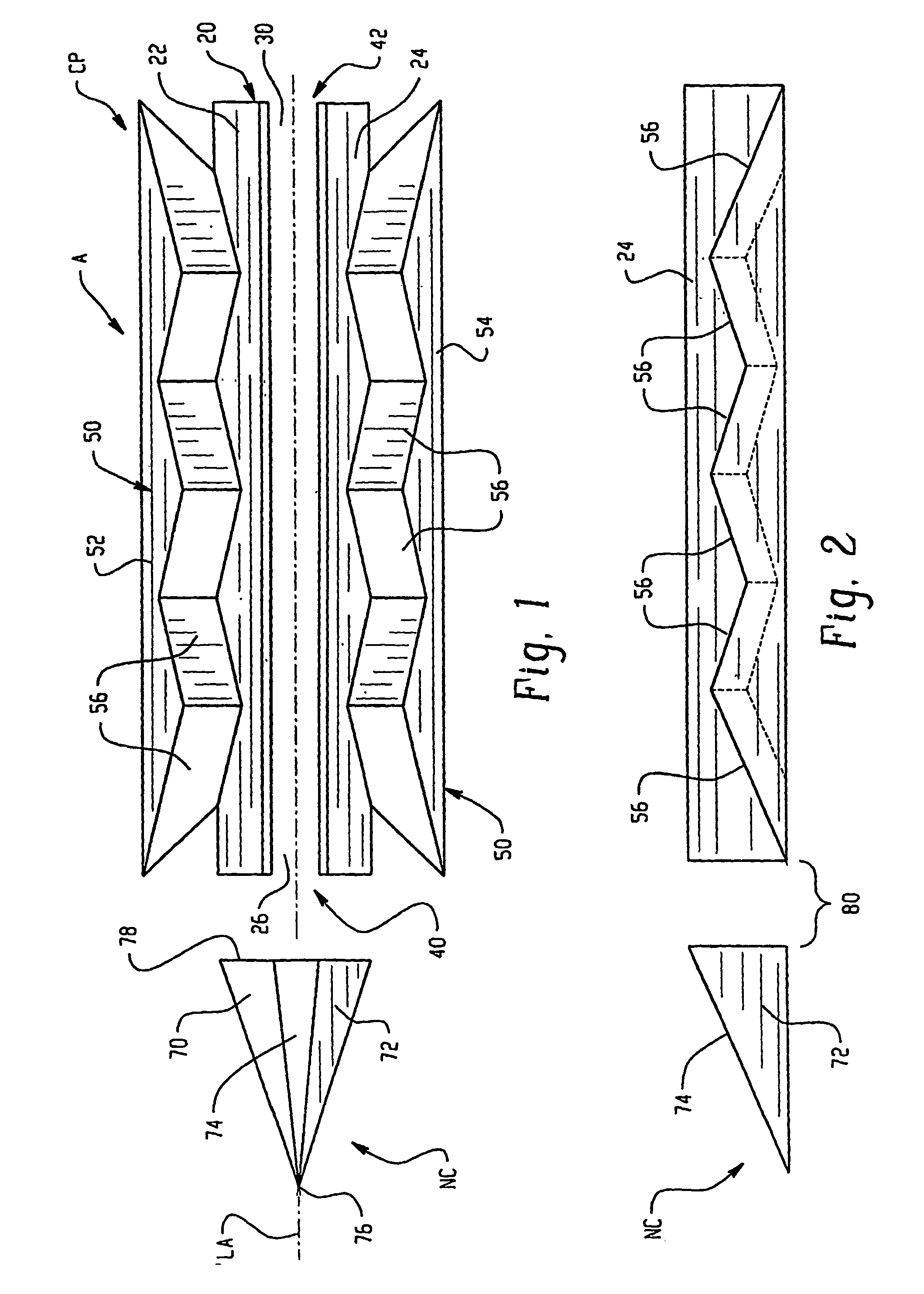Bio-passage for disrupting laminar flow
a technology of laminar flow and bio-passage, which is applied in the field of bio-passage for disrupting laminar flow, can solve the problems of affecting the ability of fish to migrate through these regions, affecting reducing the flow of fish, so as to achieve the effect of reducing the flow
- Summary
- Abstract
- Description
- Claims
- Application Information
AI Technical Summary
Benefits of technology
Problems solved by technology
Method used
Image
Examples
Embodiment Construction
[0021]Turning first to FIGS. 1-3, an apparatus, also referred to as a bio-passage assembly A is shown in plan view. It includes a channel portion CP and a deflector or nosecone portion NC.
[0022]More specifically, the channel portion CP includes a housing 20 which includes first and second sidewalls 22, 24. As evident in FIGS. 1-3, the sidewalls 22, 24 are disposed in angled relation and define a generally trapezoidal-shaped passage 26 (FIG. 3). That is, the passage is wider at a bottom portion 28 and narrower at an upper portion 30 that terminates in an opening 32. The opening preferably extends along the longitudinal extent of the channel portion. The passage has a first or inlet end 40 that communicates along the length of the channel portion with a second or outlet end 42 (FIG. 1). For reasons which will become more apparent below, this passage has a reduced velocity flow therethrough in comparison to the flow velocity of the remainder of the waterway in which the assembly is ins...
PUM
 Login to View More
Login to View More Abstract
Description
Claims
Application Information
 Login to View More
Login to View More - R&D
- Intellectual Property
- Life Sciences
- Materials
- Tech Scout
- Unparalleled Data Quality
- Higher Quality Content
- 60% Fewer Hallucinations
Browse by: Latest US Patents, China's latest patents, Technical Efficacy Thesaurus, Application Domain, Technology Topic, Popular Technical Reports.
© 2025 PatSnap. All rights reserved.Legal|Privacy policy|Modern Slavery Act Transparency Statement|Sitemap|About US| Contact US: help@patsnap.com



